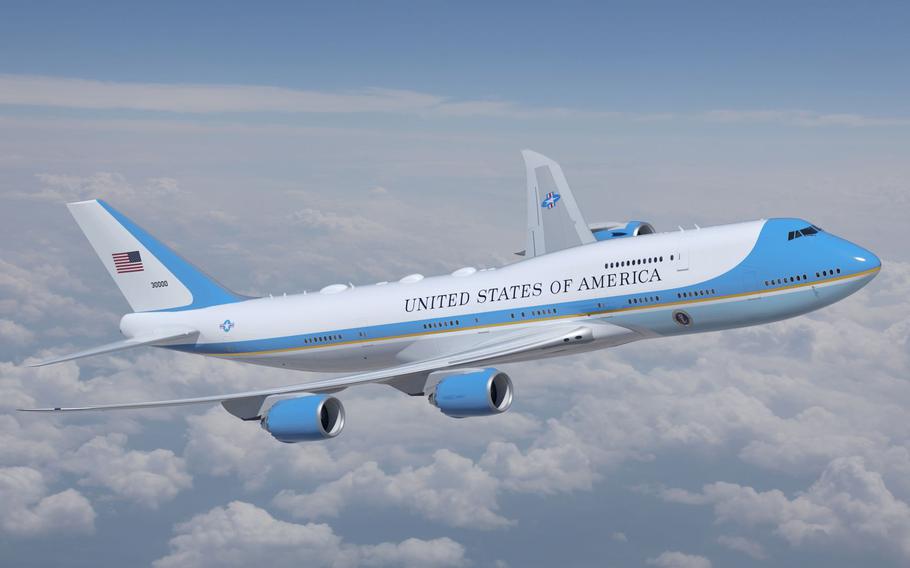
The next Air Force One aircraft, seen here in an artist’s rendering, are based on the Boeing 747-8 commercial airliner and are expected to begin flying the president of the United States in the late 2020s. The plane’s paint scheme will also have a few minor changes. (U.S. Air Force)
WASHINGTON — Aerospace giant Boeing on Wednesday reported almost $500 million in additional losses for its program to develop two new planes for the president of the United States, a program that already has seen hundreds of millions in losses in the past few years.
In its third-quarter earnings report, Boeing noted the $482 million loss during the period in its VC-25B Air Force One program. The company’s defense business — called Boeing Defense, Space and Security — lost $924 million overall during the quarter, the report said.
“Defense, Space and Security third-quarter revenue was $5.5 billion. Third quarter operating margin was 16.9%, due to a $482 million loss on the VC-25B program driven by higher estimated manufacturing cost related to engineering changes and labor instability, as well as resolution of supplier negotiations,” Boeing said in a statement.
The VC-25B is a military version of Boeing’s 747-8 commercial airliner. For the past few years, the company has been working to retrofit two planes as replacements for the current Air Force One aircraft when they are retired later this decade. The Air Force said recently the first new Air Force One is expected to start flying the president in 2027, and the second plane in 2028.
Combined with previous cost overruns in the program, the third-quarter loss increases overall losses for VC-25B development to more than $1 billion since 2020.
“We are focused on driving stability in our supply chain and improving operational performance as we steadily increase production rates to meet strong demand,” Boeing CEO and President David Calhoun said Wednesday. “Leading with safety, quality and transparency, we will continue to restore our operational and financial strength.”
Though the new planes will feature top-secret aviation and defense technology that neither the military nor Boeing can discuss publicly, President Joe Biden announced this year there would be slight changes to the planes’ livery design. The blue will be “slightly deeper” and more “modern” than the shade of the current presidential planes — and there will be no polished metal sections on the aircraft. Another slight change is the blue paint around the engines will be a darker shade.
Last year, Calhoun told investors that it was probably a mistake for Boeing to sign the $3.9 billion fixed-price contract that it negotiated with then-President Donald Trump in 2018 to produce the new planes. Under that arrangement, it’s up to Boeing to take responsibility for unforeseen risks, such as cost overruns.